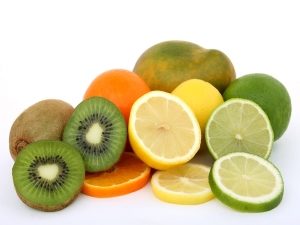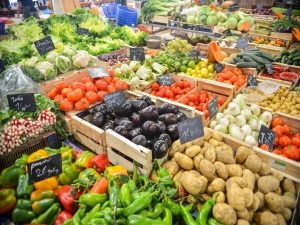Knee Pain from Weight Gain | Why it Happens and How to Fix It
Knee pain from gaining weight is a well-established fact in the medical community. But the unfortunate truth is that pain isn’t the only symptom your knees will suffer from.
In fact, one study says that weight gain also led to increasing stiffness, deteriorating function, and of course, knee pain.
So, let’s get a better understanding of why excessive weight gain causes knee pain. And, hopefully, urge you to keep better track of your weight.
Why does weight gain cause knee pain?
- Your knees can only take so much pressure.
According to a study, the force your knees receive while walking is 2 to 3 times your body weight.
If you weigh 100 kilograms right now, you could potentially exert 300 kilos of pressure to your knees with each step you take!
That might seem like a lot, but your knees are normally designed to take this much force because they have cartilage and muscle to help absorb that pressure. However, with increasing weight, you also supercharge your cartilage’s deterioration, eventually leading to knee pain.
Does that mean walking – or exercise as a whole for that matter – is bad for your knees? Not necessarily, but we’ll get to that later.
- Obesity increases your risk of knee osteoarthritis
Speaking of cartilage, knee osteoarthritis (OA) is a condition described as the degeneration of your joints’ cartilage. The thinner and more broken down your cartilage gets, the more likely it is that you will experience knee pain, inflammation, and stiffness.
It is, unfortunately, a progressive disease and it will only get worse over time. Even more unfortunate is that obesity is the leading risk factor for developing osteoarthritis.
While there is currently no cure for this condition, there are treatments that help slow down its progression. Again, more on that later.
- Weight gain encourages biomechanical imbalances
First of all, this does not happen instantaneously. The same can be said for knee OA, too.
A 2020 study from Acta Biomedica states that: people are more likely to develop knock knees when they become obese. This works both ways with another study linking bow-leggedness and a higher BMI to more severe osteoarthritis.
Weight gain is more likely if you’re sedentary – and that itself poses a myriad of musculoskeletal issues.
Overall, these biomechanical imbalances alter the forces exerted on your knees which, in turn, may lead to knee pain.
How do you stop knee pain from weight gain?
Well, the obvious answer is weight loss.
Losing at least 10% of your body weight has tremendous benefits for both knee pain and function.
But, as you already know, weight loss isn’t all that simple. Strategies that work for some people may not always work for you.
For example, there are a few people who can sustain rapid weight loss, but most people are more likely to keep the weight off if they lose it gradually.
The key here is to find what works for you to increase your chances of maintaining a healthy weight. I personally recommend gradual weight loss for safety reasons. But, should you attempt a faster approach, please do so with the guidance of a team of professionals.
Strengthen your muscles.
Remember what I said about being sedentary promoting muscular imbalances that lead to joint pain? Well, resistance training restores your knee joints’ biomechanics and normalizes your muscles’ firing patterns.
Ultimately, this reduces pain and helps curb the progression of osteoarthritis.
The best part is that you don’t have to go to the gym to start training. There’s no shortage of effective knee strengthening exercises that you can do at home, such as air squats, hamstring curls, and calf raises just to name a few.
Eat healthier food.
Eating “healthy food” generally also involves these 3 things:
- Eating more low calorie fruits and vegetables
- Eating less of calorie dense fat (the unhealthy kind)
- Avoiding food that promotes inflammation
So, this goes well with losing weight.
For many people, this might be one of, if not the hardest part about losing weight. So, don’t feel bad if you don’t get it right the first time.
I highly recommend seeing a qualified dietician or nutritionist for this, but here are a few tips:
- Grill or steam your meats. Both methods do not involve as much cooking oil as frying, so you’re essentially already cutting calories and pro-inflammatory fat.
- Cut down on added sugar. Added sugar such as those found in sodas and desserts essentially don’t have any nutritional value despite the heavy calories. If you want a sweet treat, grab a piece of fruit instead.
- Cut down on salt and MSG. Both substances contain sodium which promote inflammation, especially towards those of us with high blood pressure and cardiovascular disease.
- Drink in moderation. Alcohol is a relaxant that may help reduce certain cases of knee pain but only in moderation as excessive alcohol consumption also promotes inflammation.
- Eat less red meat. Red meat consumption has been associated with higher markers of inflammation, particularly in those with high belly fat (e.g. obese people). (9)
- Incorporate foods rich in omega-3 to your diet. These include cold-water fish such as salmon and mackerel, nuts, beans, and plant oil. Omega-3 is known to fight inflammation which may help with joint pain.
Where to from here?
Now that you have all the information, it’s up to you to decide what to do. Little steps are easier to fit into a busy routine. Once it becomes a habit, make another small change and then another. Your knees will thank you!
Guest Author: Kristopher Ceniza, Bachelor Degree in Physical Therapy from Cebu Doctors University, The Phillipines and website manager for Knee Force.


